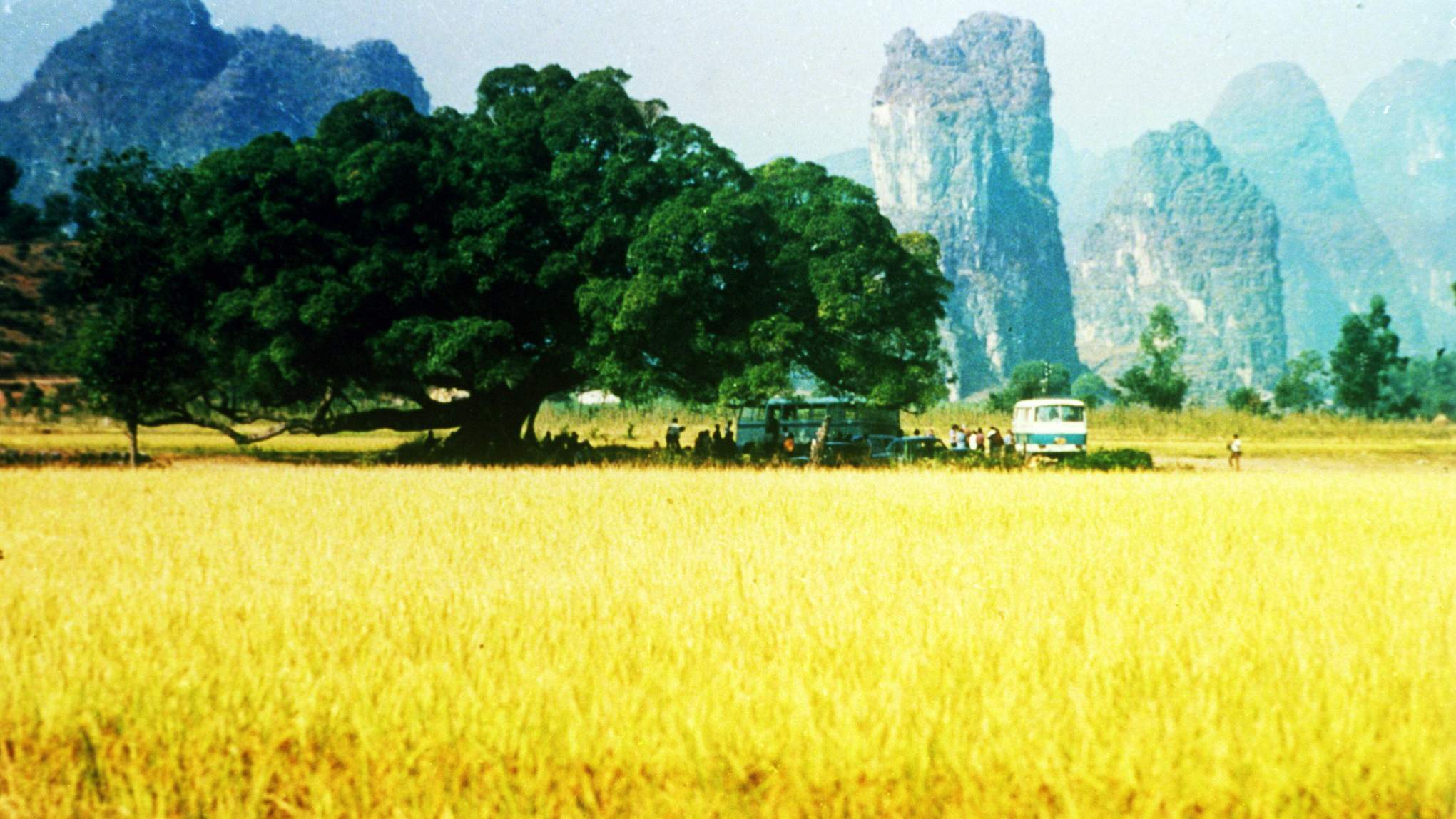
Culture
23:12, 07-Dec-2018
Guangxi's magic Big Banyan Tree: From matchmaker to cash cow
Updated
22:30, 10-Dec-2018
Wu Yan

A thousand-year-old banyan tree in a picturesque village in south China's Guangxi Zhuang Autonomous Region, which once witnessed a legendary romantic relationship, now attracts tourists and brings wealth to the local people.
Big Banyan Tree is located in Yangshuo County of Guilin, a world-renowned tourist destination that appears on the back of the 20 yuan Chinese paper currency. Guilin boasts green waterways and towering Karst mountains, which were inscribed in the World Natural Heritage List in 2014.
There's a Chinese proverb saying "Guilin's scenery is second to none in the world, and Yangshuo's scenery is second to none in Guilin."

A fisherman and a boy watch a lamp on a bamboo raft on a river in Guilin, August 29, 2015. /VCG Photo
A fisherman and a boy watch a lamp on a bamboo raft on a river in Guilin, August 29, 2015. /VCG Photo
Surrounded by stone mountains, rivers, bamboos and rice paddies, the tree has grown for over 1,400 years, measuring 7 meters (about 23 feet) in girth and 17 meters (about 55.8 feet) in height. Although its stem is very old and its roots twist, its branches and leaves stretch out lushly to cover an area of more than 1,000 square meters.
The tree is reportedly the same age as Yangshuo County and has witnessed many stories. Among them, a couple's love story moved the world and gained the tree its fame.
One day in 1960, a young couple came under the tree on a bamboo raft. Singing a love song, the woman threw an embroidered ball to the man, and they confirmed their engagement to each other in this way.

Third Sister Liu and A'Niu confirmed their engagement with each other under the Big Banyan Tree. /Screenshot of film "Third Sister Liu"
Third Sister Liu and A'Niu confirmed their engagement with each other under the Big Banyan Tree. /Screenshot of film "Third Sister Liu"
The scene is the ending of the film “Third Sister Liu,” the first landscape musical film produced in China. It tells the story of a legendary female of the Zhuang ethnic group, surnamed Liu, who praises hard-working farmers and fishermen but condemns a tyrant landlord with her beautiful folk songs. Hating and fearing her, the landlord tries to stop her from singing but fails, and kidnaps her. Liu escapes with the help of her lover A'Niu and other villagers.
The film incorporates the melodious folk songs of the Zhuang ethnic group and marvelous scenery of Guangxi.
When it was released in 1961, the film became an instant hit in China, Southeast Asia and beyond. In Singapore, it was screened to the public for 120 consecutive days in the first and second year, respectively. And Malaysians hailed the film as one of the top 10 films in the world.
During the past 60 years, the film has continued to screen and become a shared memory of several generations.
Although the film is adapted from a myth of the Zhuang ethnic group and Third Sister Liu may not be a real person in history, they have become a cultural brand for Yangshuo, Guilin and Guangxi.

File photo of Yangshuo County, Guilin, in south China's Guangxi Zhuang Autonomous Region /VCG Photo
File photo of Yangshuo County, Guilin, in south China's Guangxi Zhuang Autonomous Region /VCG Photo
Film fans at home and abroad visit the tree to recall their memories, while other visitors hear the story of Third Sister Liu in Guangxi and carry it back home, attracting more tourists.
Since 1973, Guilin has welcomed a growing number tourists, including over 180 heads of state and state leaders; and in 2017, the number of tourists reached 82.3 million.
Yangshuo, in particular, received 15.5 million tourists, among whom 2.18 million were foreigners, achieving 18 billion yuan in tourism consumption in 2017. Local people benefit from the prosperous tourism, with more than 100,000 out of 300,000 residents making their livelihood on leisure agriculture and village tourism, according to Guilin Daily.
(Top image: File photo of Big Banyan Tree in Yangshuo County, Guilin, of south China's Guangxi Zhuang Autonomous Region /VCG Photo)

SITEMAP
Copyright © 2018 CGTN. Beijing ICP prepared NO.16065310-3
Copyright © 2018 CGTN. Beijing ICP prepared NO.16065310-3